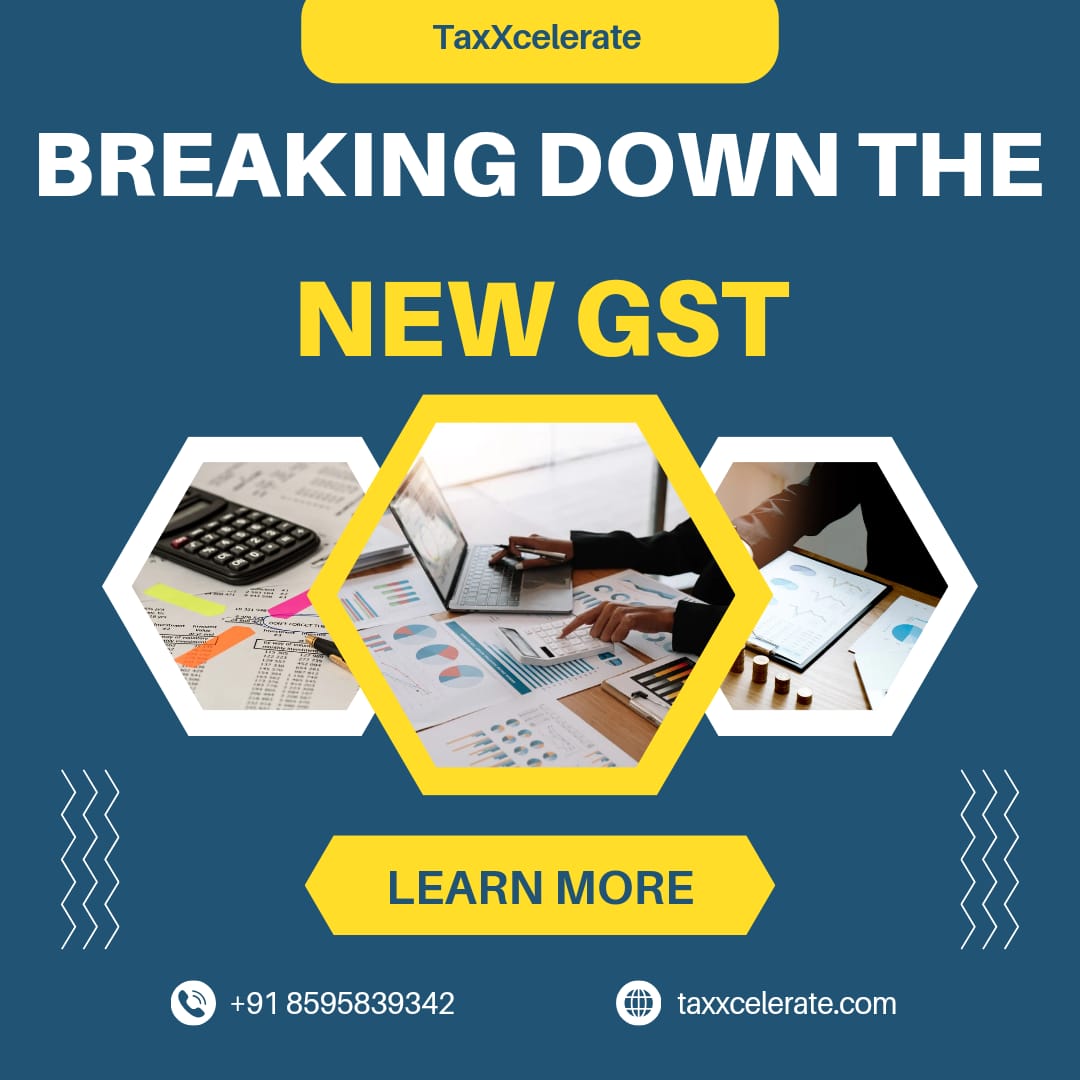Introduction
The Goods and Services Tax (GST) is a comprehensive, multi-stage, destination-based tax that has significantly reshaped the Indian tax system since its implementation in 2017. With new updates and reforms introduced in 2024, understanding these changes is crucial for both businesses and consumers. This blog will delve into the new GST updates, their implications, and how they affect you.
1. Overview of GST
What is GST?
The GST is a unified tax levied on the supply of goods and services, replacing multiple indirect taxes previously levied by the central and state governments.
GST Structure
GST is structured into three main components:
- CGST: Central Goods and Services Tax
- SGST: State Goods and Services Tax
- IGST: Integrated Goods and Services Tax (for inter-state transactions)
2. Key Changes in the New GST
Updated Tax Rates
The new GST reforms have introduced updated tax rates for various goods and services. These changes aim to simplify the tax structure and ensure fairness across different sectors. For instance, certain essential goods have seen a reduction in GST rates to make them more affordable for the general public.
E-Invoicing Mandate
To streamline tax compliance and curb tax evasion, the government has expanded the e-invoicing mandate. Businesses with a turnover exceeding ₹5 crore are now required to generate electronic invoices for B2B transactions. This system ensures real-time tracking of invoices and enhances transparency.
Composition Scheme Updates
The Composition Scheme, which offers a simplified tax regime for small businesses, has undergone modifications. The turnover limit for eligibility has been increased, allowing more businesses to benefit from lower tax rates and reduced compliance burdens.
Input Tax Credit (ITC) Adjustments
Reforms in the ITC mechanism aim to simplify the process of claiming tax credits. The government has introduced a more streamlined system for matching invoices and auto-populating ITC claims, reducing the chances of discrepancies and easing the compliance process for businesses.
3. Impact on Businesses
Compliance Simplification
The new GST reforms are designed to simplify compliance for businesses. With enhanced e-invoicing and auto-populated ITC claims, businesses can focus more on their operations rather than grappling with complex tax procedures.
Cost Implications
While the reduction in GST rates on essential goods is a welcome change, businesses dealing with luxury items might face higher tax rates. It’s crucial for businesses to assess these changes and adjust their pricing strategies accordingly.
Operational Efficiency
The expanded e-invoicing mandate and other digital compliance measures improve operational efficiency. Businesses can benefit from reduced paperwork, faster processing of tax returns, and better inventory management.
4. Benefits for Consumers
Lower Prices on Essentials
Consumers will benefit from reduced GST rates on essential goods. This move aims to make everyday items more affordable, easing the financial burden on households.
Transparency and Accountability
The new GST reforms promote greater transparency in the taxation system. Consumers can expect more accurate billing and fewer instances of tax evasion, ensuring that the tax they pay is appropriately utilized for public services.
5. Challenges and Criticisms
Implementation Hurdles
While the new GST reforms aim to simplify the tax system, their implementation might pose challenges. Businesses, especially smaller ones, may need time and resources to adapt to the new compliance requirements.
Technological Barriers
The increased reliance on digital tools for e-invoicing and compliance might be challenging for businesses lacking adequate technological infrastructure. Ensuring widespread access to these tools is crucial for the successful implementation of the reforms.
Mixed Reactions from Stakeholders
The new GST reforms have received mixed reactions from various stakeholders. While some applaud the efforts to streamline the tax system, others are concerned about the increased compliance burden and potential cost implications.
6. How to Stay Compliant
Regular Updates and Training
Businesses should stay updated with the latest GST notifications and reforms. Regular training sessions for staff on new compliance requirements can help in seamless adaptation.
Utilize Digital Tools
Investing in robust accounting and compliance software can significantly ease the transition to the new GST system. These tools can automate invoicing, ITC claims, and tax return filing, reducing manual errors and saving time.
Consult with Experts
Seeking advice from tax consultants and experts can provide valuable insights into navigating the new GST landscape. They can help identify opportunities for tax savings and ensure compliance with all regulatory requirements.
7. Conclusion
The new GST reforms introduced in 2024 bring significant changes aimed at simplifying the tax system and enhancing transparency. While there are challenges in implementation, the potential benefits for both businesses and consumers are substantial. Staying informed and adapting to these changes will be crucial for maximizing the advantages of the new GST regime.
At TaxXcelerate, we provide comprehensive services to help you navigate these changes. Whether it’s ITR Filing, Consultancy, or Bookkeeping, our experts are here to ensure you stay compliant and maximize your tax benefits. Visit our website for more information and expert advice on managing your finances and tax obligations effectively.




[…] 100 mg viagra […]